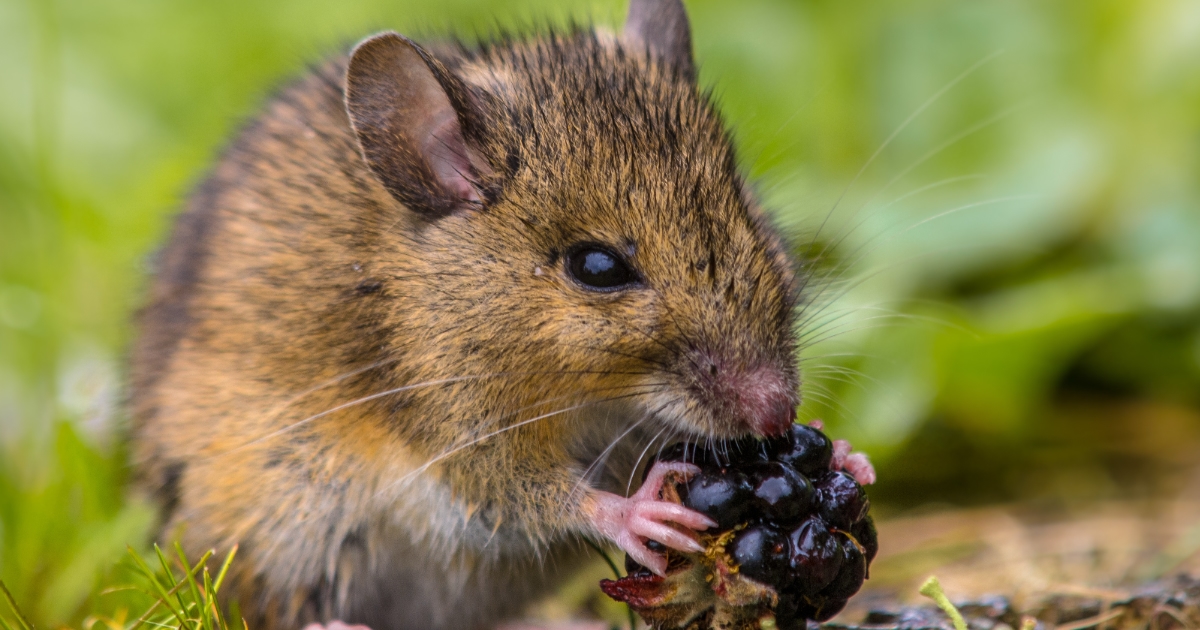If you live in southeast Kansas, you know that rodents aren’t just a nuisance; they’re a real threat to your home, health, and peace of mind. At Bug-A-Way Pest Control, we’re here to help you understand the most common rodent pests in our region, the risks they pose, and the best ways to protect your property.
Common Rodent Species in Southeast Kansas
1. House Mouse
- The most frequent invader of Kansas homes.
- Small (2.5–3.75 inches long, with a tail adding 2.75–4 inches), light-brown or dark-gray fur, and beady black eyes.
- Extremely adaptable and can squeeze through holes smaller than a dime.
2. Deer Mouse
- Larger than the house mouse (5–8 inches long).
- Light brown with gray patches and a distinctive white belly.
- Known for nesting in hidden indoor spaces, especially during colder months.
3. Norway Rat
- Also known as the sewer rat, these rodents are larger (7–10 inches long) and have mostly brown fur.
- Highly destructive, especially in basements, crawl spaces, and garages.
5. Voles
- Small, mouse-like rodents that burrow through lawns and gardens.
- Can cause significant damage to landscaping and garden plants.
Why Rodents Are a Serious Problem
Rodents are more than just a nuisance; they can:
- Spread diseases such as hantavirus, leptospirosis, and salmonella through their droppings, urine, and saliva.
- Trigger allergies and asthma due to airborne allergens from their waste and dander.
- Damage property by gnawing on wood, insulation, and electrical wiring, which can even lead to electrical fires.
- Contaminate food and surfaces, putting your family’s health at risk.
Signs of a Rodent Infestation
Watch for these telltale signs:
- Small, dark droppings in cupboards, pantries, or along walls.
- Gnaw marks on food packaging, wood, wires, or pipes.
- Shredded paper, fabric, or insulation used as nesting material.
- Scratching or squeaking noises, especially at night.
- Unpleasant, musky odors in hidden areas.
- Footprints or tail marks in dusty corners.
Preventing Rodent Problems in Southeast Kansas
Rodent prevention is essential, especially as temperatures drop and rodents seek shelter indoors. Here’s what you can do:
- Seal entry points: Inspect your home for cracks, holes, and gaps around doors, windows, roofs, and foundations. Even tiny openings can let mice in. Use steel wool and caulk to block holes, and repair weatherstripping as needed.
- Store food securely: Keep all food, including pet food, in airtight containers. Clean up crumbs and spills promptly.
- Eliminate clutter: Remove piles of leaves, mulch, and debris from your yard, as these provide nesting materials and hiding spots.
- Maintain your property: Keep compost piles turned, trash cans tightly sealed, and regularly inspect attics, basements, and crawl spaces for signs of rodent activity.
- Be proactive: Set traps in areas where you suspect rodent activity and change the bait regularly.
Professional Rodent Control: Your Best Defense
If you suspect a rodent infestation or want to prevent one before it starts, contact Bug-A-Way Pest Control. Our experienced team will:
- Inspect your property to identify rodent species and nesting sites.
- Develop a customized treatment plan using traps, bait stations, and exclusion techniques.
- Offer ongoing prevention tips and maintenance to keep your home rodent-free throughout the year.
